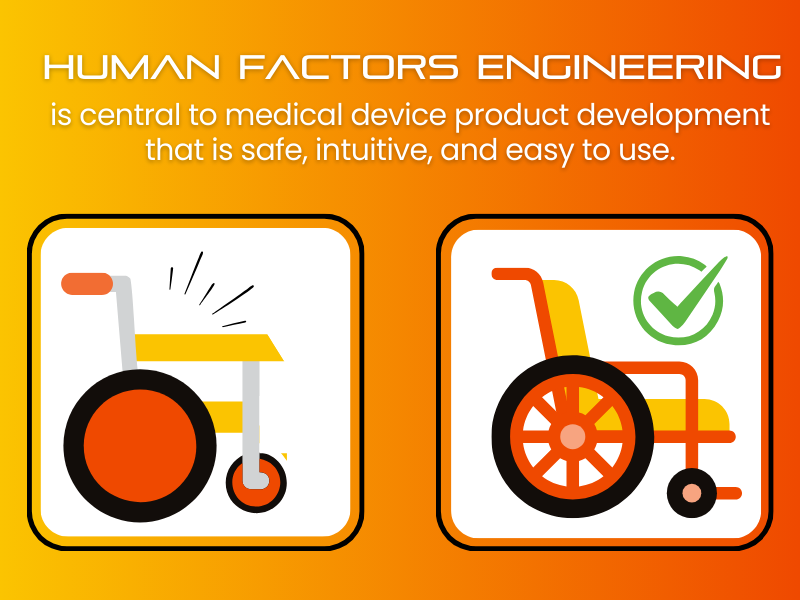
Table of Contents
Key Benefits of Professional Medical Device Design Services

- Improved Product Performance: Professional design services improve functionality, reliability, and durability, which are critical for meeting both market demands and regulatory standards. Devices built with quality in mind perform better over time, making them valuable investments for healthcare providers.
- Faster Regulatory Approval: Working with FDA registered medical device manufacturers who are well-versed in ISO certification requirements helps reduce the time spent navigating regulatory red tape. By designing with compliance in mind, your product is more likely to meet FDA guidelines without the need for extensive modifications.
- Cost Savings Through Early Validation: By identifying compliance or usability issues early, medical device design manufacturing services help reduce the likelihood of costly redesigns down the line. Early-stage validation and testing also confirm that design errors are addressed before they escalate.
- Seamless Integration Across Development Stages: With cohesive product development services, each phase-from initial concept to full-scale production-flows smoothly, minimizing the risk of misalignments and maintaining a high-quality final product.
Integration Development: How Medical Device Design Works with Product Development
Medical device design manufacturing services don’t function in isolation. Successful products are crafted through a holistic approach that integrates design with other stages of product development. This interconnected framework enhances device quality, usability, and efficiency.
- Collaborative Design and Prototyping: When design aligns with prototyping, teams can create initial models that reflect the final product’s usability and functionality. This hands-on approach allows teams to make real-time adjustments based on feedback, ultimately leading to a more refined product.
- Seamless Connection to Manufacturing: Manufacturing services help maintain a smooth handoff from design to production. By incorporating manufacturing process validation early on, manufacturers can anticipate and address potential production challenges, improving efficiency and reducing bottlenecks.
- Validation and Testing at Every Stage: Partnering with an ISO-certified manufacturer confirms that validation checks meet FDA and ISO standards from the start, setting the foundation for a compliant final product. This approach mitigates the risk of setbacks during the approval process.

A well-integrated development approach establishes that each phase supports the next, creating a smooth path from medical device design manufacturing services to a market-ready machine.
Early Validation: Reducing Costs, Risks, and Delays
Incorporating validation early in the medical device design manufacturing services process provides significant benefits, helping manufacturers avoid delays, control costs, and reduce risks. Early validation is important to verify that medical devices perform effectively and meet regulatory standards.
- Cost Efficiency: Addressing issues at the design phase is far less costly than fixing problems discovered during later stages. By catching and resolving potential issues early, manufacturers keep the project within budget and avoid wasted resources.
- Risk Reduction: Validating the device’s safety, functionality, and compliance with industry standards early on reduces the risk of product recalls or failures. For healthcare products, where reliability is crucial, early validation builds a foundation for a product that healthcare providers can trust.
- Accelerated Regulatory Approval: Early validation aligns the device with FDA and ISO guidelines, setting up a smoother regulatory approval process. By addressing compliance requirements at the outset, manufacturers can reduce the time spent on regulatory revisions and accelerate time-to-market.
Early validation not only streamlines the product development service pipeline but also establishes a solid foundation for market success.
The Role of Human Factors Engineering in Medical Device Design
Human factors engineering (HFE) is central to medical device product development that is safe, intuitive, and easy to use. By focusing on how real users-whether healthcare providers or patients-interact with the device, HFE enhances usability and minimizes the potential for error.
- Improved Usability: Designing with the user in mind creates devices that are easy to understand and operate, fostering confidence and reliability in medical settings. User-friendly devices are more likely to be adopted and used accurately by healthcare providers and patients alike.
- Improved Safety: Considering how users handle the device during routine and critical moments addresses potential safety risks, improving the device’s reliability in high-stakes environments.
- Reduced Error Rates: HFE minimizes user errors by emphasizing intuitive controls and clear interfaces. A thoughtfully designed device reduces the need for extensive training and helps maintain correct usage right from the start.

Product Engineering Services That Optimize Medical Device Design
- Precision Prototyping: Prototyping provides an opportunity to test and refine the device before full-scale production. This phase saves time and enhances device quality by allowing adjustments based on real-world testing.
- Advanced Materials Selection: Selecting materials that meet both durability and safety standards is critical. Product engineering confirms that materials are chosen with FDA and ISO requirements in mind, providing the highest quality outcome.
- Customized Design Solutions: Tailoring designs to specific medical applications allows for devices that meet unique functional needs. Feedback from healthcare professionals guides these customizations, making sure that the final product is practical, compliant, and effective.
With an integrated approach, medical device design manufacturing services support every stage of your equipment’s development, helping bring innovative devices to market efficiently and confidently.
